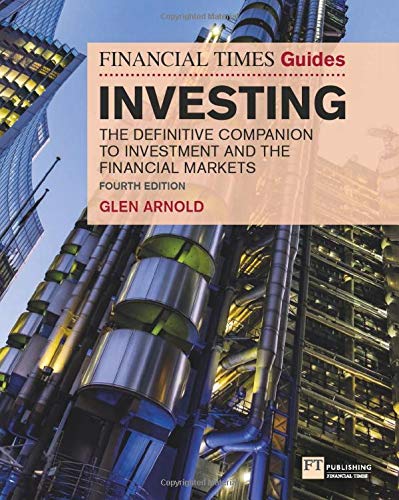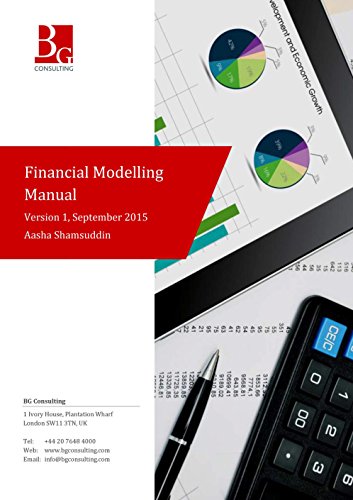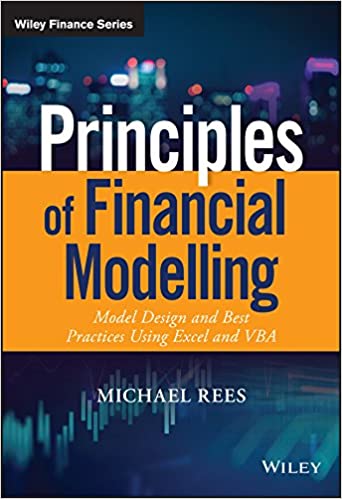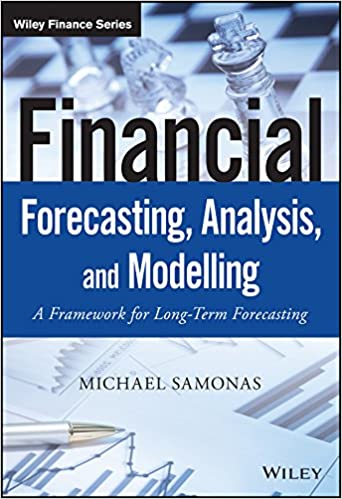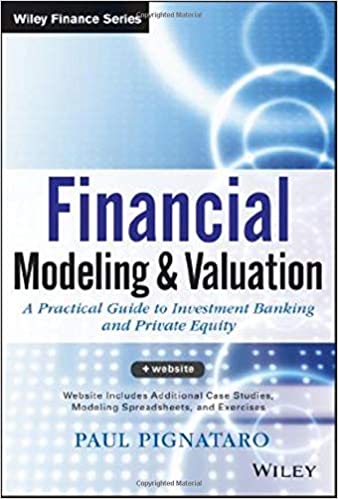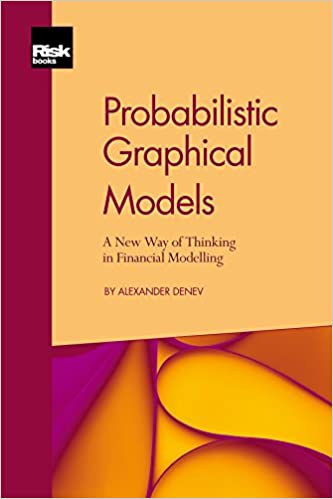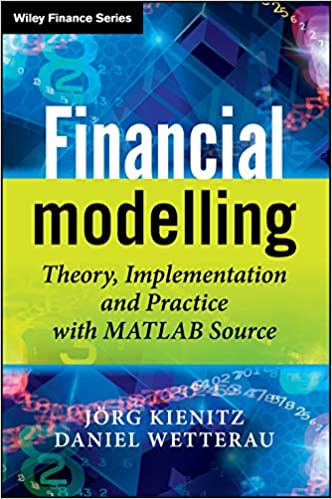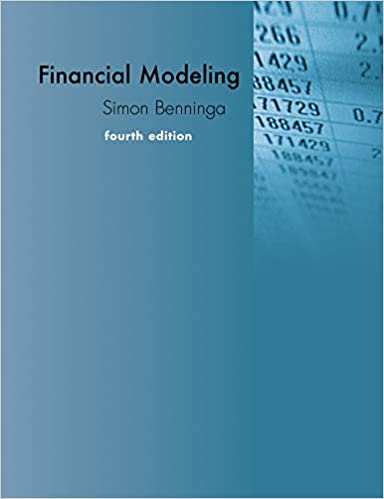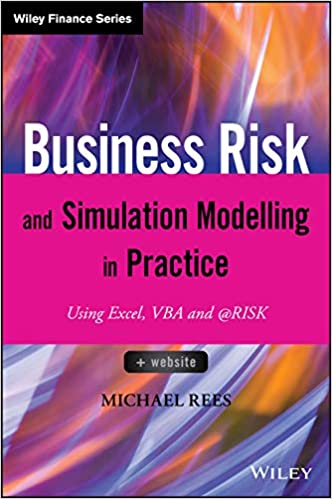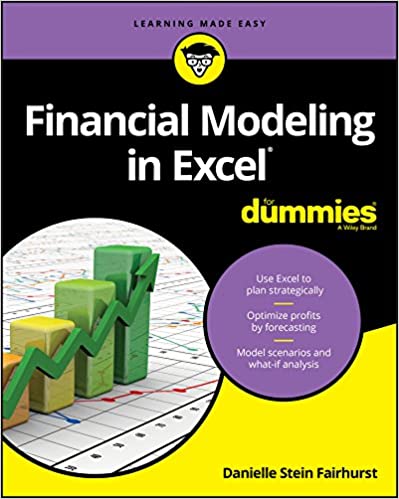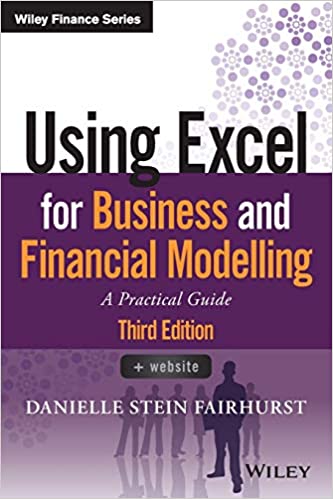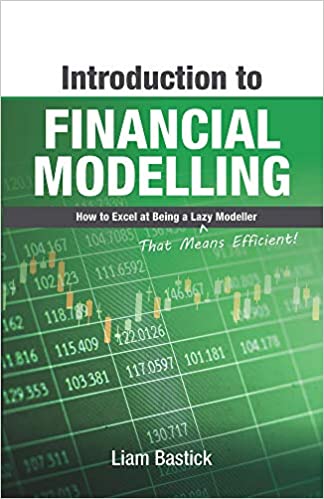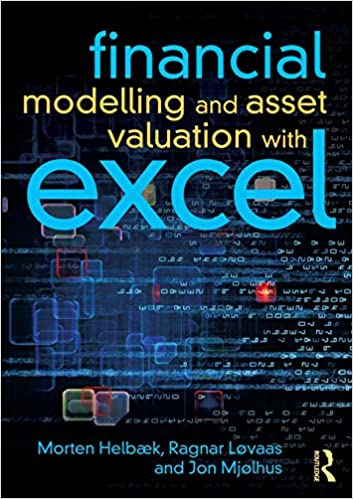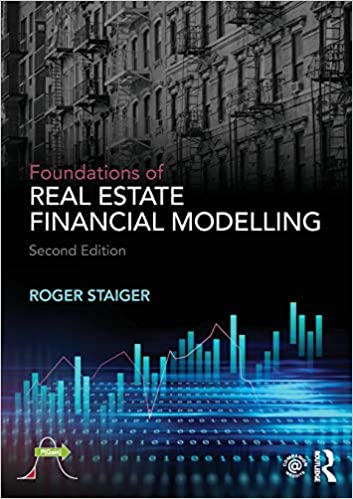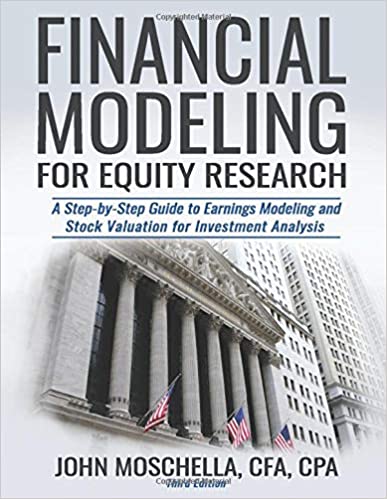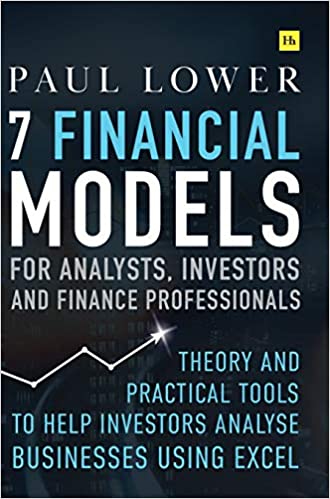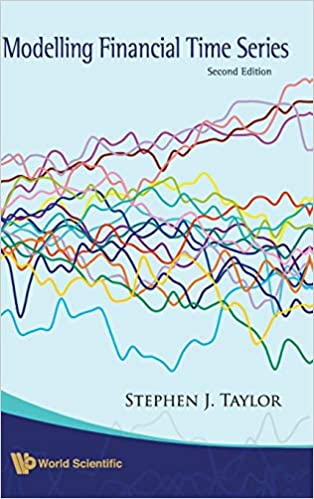Last updated: 20 December 2021. This page features our ultimate ranking of the best financial modelling books available today. The page also features several shortlists which will group titles by type of modelling or level of difficulty/assumed knowledge.
Financial modelling is an excellent discipline to learn. While financial analyst is probably the role most closely connected with modelling, financial modelling is useful for a variety finance professions, as we explain below.
With prices ranging from £12 - £70, stocking up on a few of the best financial modelling books can deliver the same value as an expensive seminar for only a fraction of the cost. They can even be read for free with Amazon's Kindle Unlimited free trial.
Click on any title below to see the latest price from Amazon, you'll be shocked at how affordable the most popular titles are. As an Amazon Associate, I earn a small commission from qualifying purchases which helps to support this site. This does not impact how I compile the list. Happy reading!
Discover prime books on investing and finance
No boundaries, just your curiosity- Invest with confidence
- Finance industries
- Real estate & real assets
- Exotic investments
- The bigger picture
Books reviewed
Financial Expert 2024 Book Awards
Gold Prize
Financial Times Guides: Investing by Glen Arnold
The best financial modelling books for beginners
Develop your modelling skills from scratch with these titlesAdvanced financial modelling books for professionals
Hone your professional skills and improve job performanceFinancial modelling books using excel or visual basic
Using the ubiquitous spreadsheet software to produce financial models & forecastsBooks about financial modelling as an investor or analyst
Modelling the performance or risk of individual investments or a portfolioDownload all these financial modelling books for free with Kindle Unlimited
You DON'T even need a Kindle device to download booksHere's a useful tip that will save you £100+ on financial modelling books. Sign-up to Amazon's Kindle Unlimited free trial, which offers access to all titles for free for 30 days.
- There's no obligation to continue with a paid subscription.
- You don't even need a Kindle to enjoy - any device will do.
If you're cost-savvy, you'll already be calculating the savings you could unlock and the knowledge you could gain by downloading 5 books over the next 30 days.
My Top 5 Financial Modelling Books for 2022
Click covers to see latest reviews and prices1. Principles of Financial Modelling - Michael Rees
Financial Expert Rating:
Synopsis:
"Principles of Financial Modelling – Model Design and Best Practices Using Excel and VBAcovers the full spectrum of financial modelling tools and techniques in order to provide practical skills that are grounded in real-world applications.
Based on rigorously-tested materials created for consulting projects and for training courses, this book demonstrates how to plan, design and build financial models that are flexible, robust, transparent, and highly applicable to a wide range of planning, forecasting and decision-support contexts.
This book integrates theory and practice to provide a high-value resource for anyone wanting to gain a practical understanding of this complex and nuanced topic."
Who this book is for:
This book integrates theory and practice to provide a high-value resource for anyone wanting to gain a practical understanding of this complex and nuanced topic.
Principles of Financial Modelling is the premier guide to real-world financial modelling from the ground up. It provides clear instruction applicable across sectors, settings and countries, and is presented in a well-structured and highly-developed format that is accessible to people with different backgrounds.
Financial Expert Rating:
Synopsis:
"Financial Modeling is now the standard text for explaining the implementation of financial models in Excel. This long-awaited fourth edition maintains the cookbook" features and Excel dependence that have made the previous editions so popular.
As in previous editions, basic and advanced models in the areas of corporate finance, portfolio management, options, and bonds are explained with detailed Excel spreadsheets.
Sections on technical aspects of Excel and on the use of Visual Basic for Applications (VBA) round out the book to make Financial Modeling a complete guide for the financial modeler."
Who this book is for:
Financial Expert Rating:
Synopsis:
"Financial Modelling - Theory, Implementation and Practice with MATLAB Source is a unique combination of quantitative techniques, the application to financial problems and programming using Matlab.
The book enables the reader to model, design and implement a wide range of financial models for derivatives pricing and asset allocation, providing practitioners with complete financial modelling workflow, from model choice, deriving prices and Greeks using (semi-) analytic and simulation techniques, and calibration even for exotic options."
Who this book is for:
"This book is a nice exposition for those Quants in Financial Engineering who are interested in an overview of modern pricing and calibration techniques in the field of Financial Derivatives. For those who have a strong mathematical background and are interested in implementation issues, this book is a severe choice." - Dr. Ingo Schneider, Financial Engineering, DekaBank
Source code used for producing the results and analysing the models is provided on the author's dedicated website
Financial Expert Rating:
Synopsis:
"Written by the Founder and CEO of the prestigious New York School of Finance, this book schools you in the fundamental tools for accurately assessing the soundness of a stock investment.
Built around a full-length case study of Wal-Mart, it shows you how to perform an in-depth analysis of that company's financial standing, walking you through all the steps of developing a sophisticated financial model as done by professional Wall Street analysts.
You will construct a full scale financial model and valuation step-by-step as you page through the book."
Who this book is for:
Ideal for universities or business students looking to break into the investment banking field.
Financial Expert Rating:
Synopsis:
"First published in 2012, Using Excel for Business and Financial Modelling contains step-by-step instructions of how to solve common business problems using financial models, including downloadable Excel templates, a list of shortcuts and tons of practical tips and techniques you can apply straight away.
It covers these features in detail from a practical perspective, but also puts them in context by applying them to practical examples in the real world. Learn to create financial models to help make business decisions whilst applying modelling best practice methodology, tools and techniques."
Who this book is for:
Many people are often overwhelmed by the hundreds of tools in Excel, and this book gives clarity to the ones you need to know in order to perform your job more efficiently. This book also demystifies the technical, design, logic and financial skills you need for business and financial modelling.
Whilst there are many hundreds of tools, features and functions in Excel, this book focuses on the topics most relevant to finance professionals.
The Financial Expert™ Best Financial Modelling Book Challenge

I challenge you to read one book per month and see if it revolutionises your investing style!
The Financial Expert™ Best Financial Modelling Book Challenge is a well-loved feature of this website.
It's about total immersion in a technical topic to either introduce you fully to the world of financial modelling, or to upgrade your existing knowledge in this discipline.
Here's the simple challenge:
I challenge you to read one financial modelling book per month for the next year, and find your new favourite!
By the time you've completed a course of 12 financial modelling books, you'll be an excel or VBA whizz who can swiftly model any scenario.
Urgent request from the board of directors to see how a left-field scenario might play out?
Want to include far more detail in your forecasts to improve their accuracy?
Fed up of laborious spreadsheets and want to find more elegant and powerful ways to build a financial model?
All of this is possible, and more, with a selection of the best financial modelling books.
You'll find that many of the medium or higher-priced titles include downloadable excel or code files which will allow you to test out tips quickly, without having to recreate the wheel each time.
This will allow you to breeze through the content and reinforce your learning through immediate implementation on your own files.
Some guidance
- I found it helpful to stock up on books for the next few months, so that when a new month rolls around, my next book was my bed-side table asking to be opened!
- Pick a variety of writing styles. This will keep the challenge fresh and increase the diversity of opinion.
- Pick at least one book that you don't think you would enjoy, this book might be the one that surprises you the most!
- If you're time-starved, audio books are absolutely fine!
Where to begin?
My list of the best financial modelling books above is as good as any place to start, as I have consciously included a mix of different writing and investing styles to ensure that it caters to a wide audience.
Good luck!
Some financial modelling tips from us
"Prediction is very difficult, especially if it’s about the future."
Follow these financial modelling tips to increase the quality, robustness and ease of use for your spreadsheet financial models.
Build it better first time
Use as many centrally controllable variables as possible.
It is common for a model to pull out a frequently used variable into a front sheet. Whenever that variable is needed, the formulae can be written to pull that variable from the front sheet every time.
This gives the model user an easy way to change or update a variable value, as it saves them looking for all uses in a model and manually updating hardcoded values.
This tip is to maximise the use of such variables in your financial model. Inputs such as interest rate, discount rate, and revenue growth rates are commonly seen in forecast or discounted cash flow models. But this can be taken much further.
You should try to use central variable whereever you want to insert a hardcoded figure. Even if that hardcoded figure is only being used once.
What are the benefits of forcing almost all figures through a centrally controlled spreadsheet?
- Provides a list of your assumptions at a glance to a reviewer, who would otherwise need to click through countless formulae to truly understand all of the model assumptions
- Future-proofs your model for variables that become used more widely. You otherwise may have continued to use hardcoded figures, running the risk of inconsistencies.
- With assumptions at hand, it's much easier to run 'solver' simulations or 'what-if' scenarios on a control sheet than for hardcoded assumptions nested within formulae.
Use redundant (huge) ranges when looking up or pivoting data
A common reason why older models eventually break is that they are given more input data than the formulae was originally built to handle.
Source data begins to slip outside the ranges used by various lookup formulae or pivot tables, and the output of the models begins to suffer from completeness issues as a result.
To solve this, you should always vastly over-estimate the range sizes required for vlook-ups. If your current source table contains 300 rows, then ask your vlookup to search the first 10,000 rows. This won't decrease the performance of the model and helps to avoid a surprise error in future years.
Over-engineer your model rather than manually tweaking individual rows
Another way to future-proof your work is to never make a manual change to formula in an individual row without a much larger model.
Always work to the rule that formula should always be consistent when it is dragged down in an array.
It may be easy for you to remember and keep track of little quick fixes you made to fix bugs or outliers, but these can quickly become unmanageable and they may slow down future updates.
For example, if you are performing calculations on a list of employees, and discover an employee you don't wish to perform the same calculation for, then create an additional column of data to 'flag' that individual, then use an IF statement to drive a different result for rows containing that flag.
This will allow you to continue to use homogenous formulae in all rows, retaining your ability to simply drag all formulae down across employees with a double click, without fear of overwritten manually tweaked code.
Looking for more financial modelling tips?
The best financial modelling books above contain hundreds of practical tips and tricks like these. Begin using these today to vastly improve the quality of your models and save yourself a lot of time in the long run.
Also, check out our related book pages:
Explore the best books in more genres
General personal finance
Trading the financial markets



